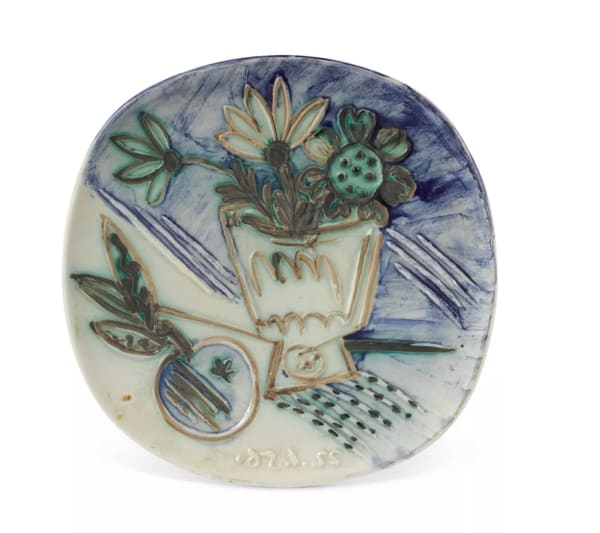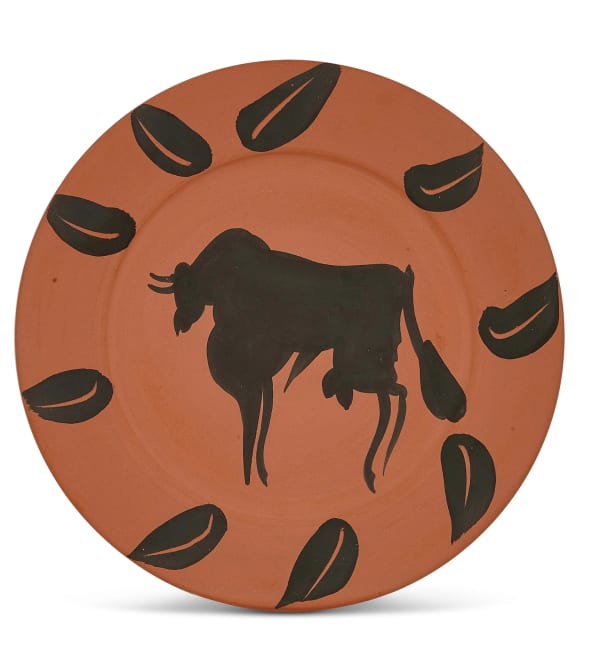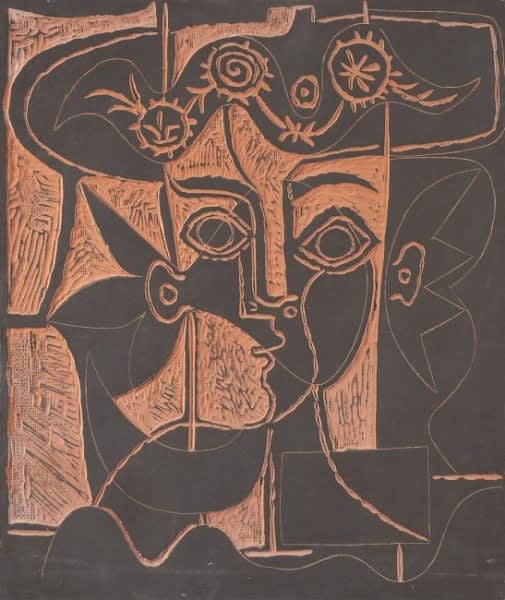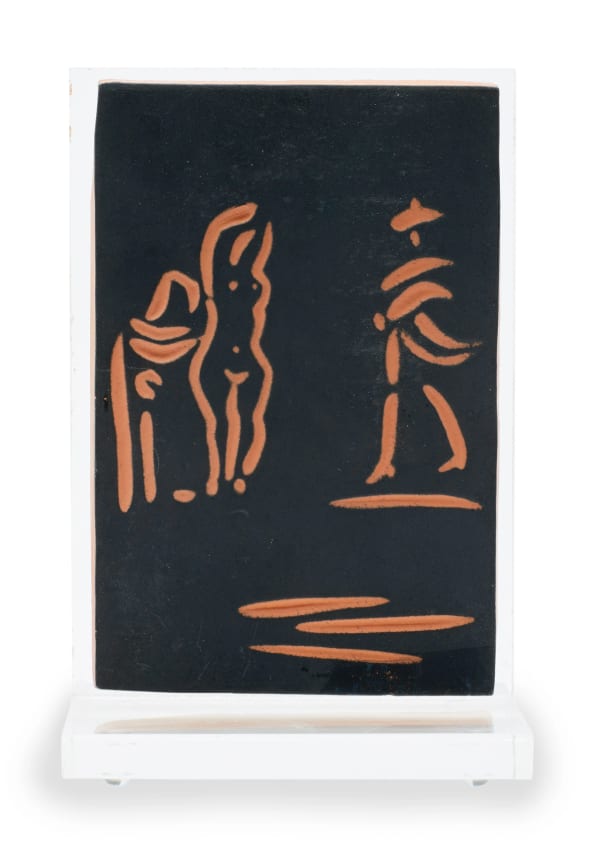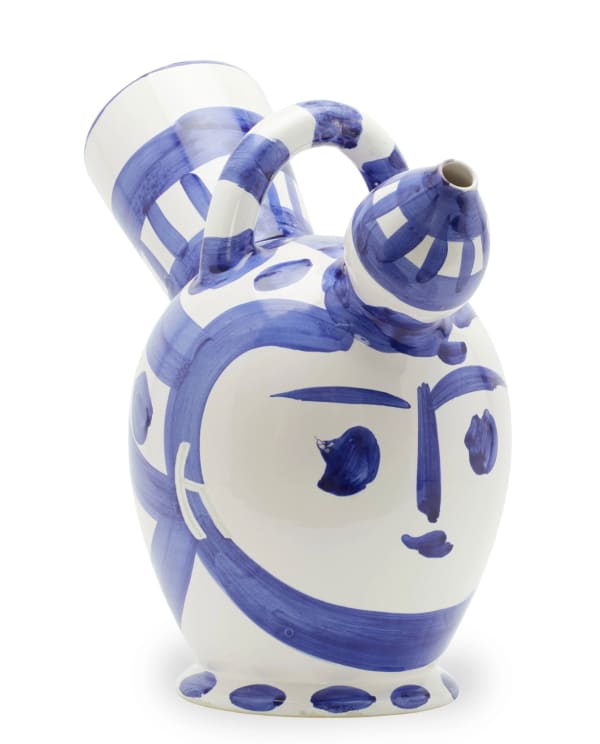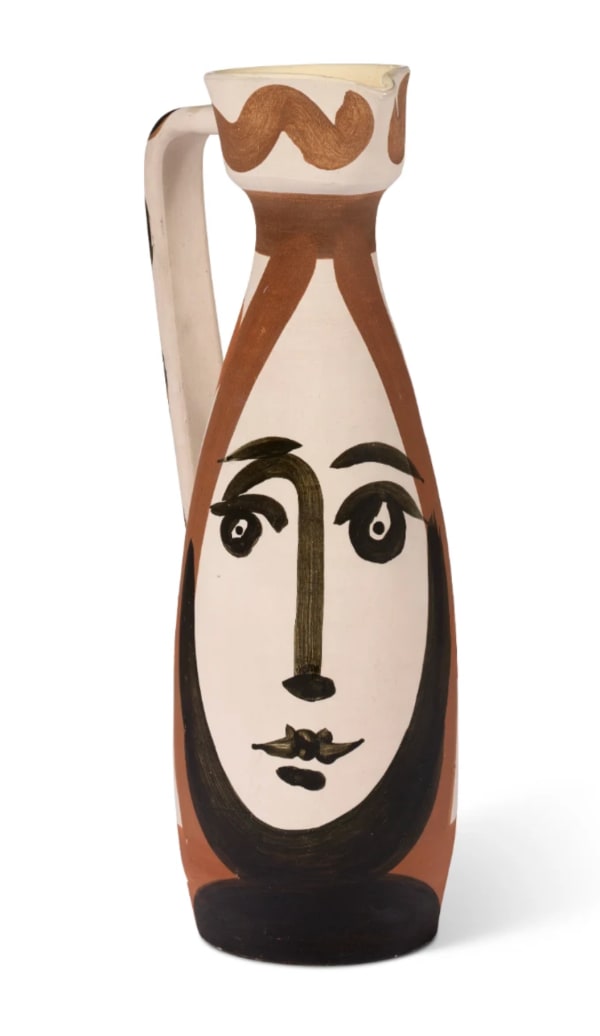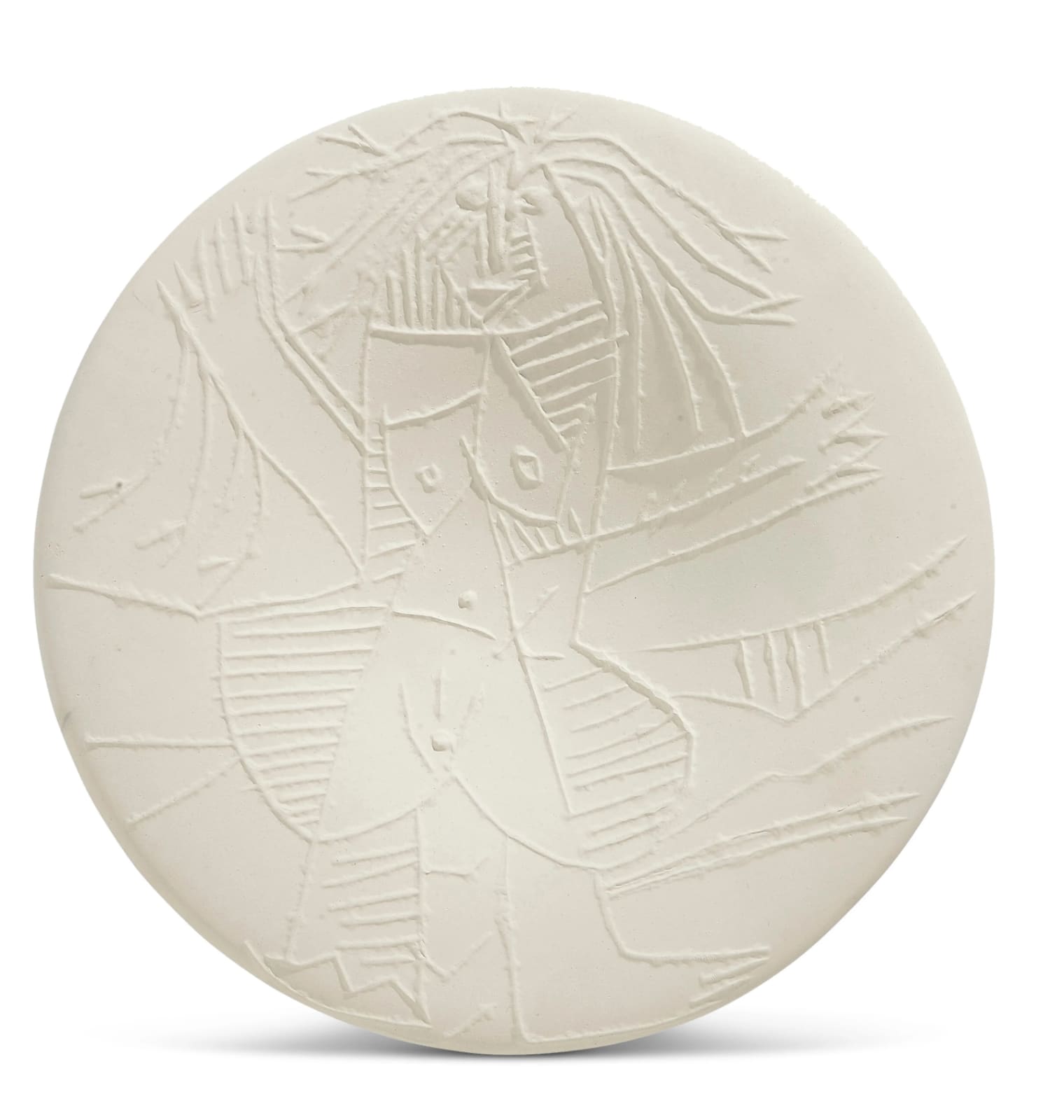
Pablo Picasso
Stamped with ‘Empreinte Originale de Picasso / Madoura Plein feu’ on reverse
26.7 cm
Pablo Picasso’s Femme échevelée (1963) is a striking example of his ceramic experimentation at the Madoura workshop, where he redefined the potential of clay as both a sculptural and pictorial medium. Created in white earthenware clay, the piece is stamped on the reverse with Empreinte Originale de Picasso / Madoura Plein Feu, affirming its authenticity and its place within the limited editions produced under the artist’s direct supervision.
The work depicts a woman with wild, flowing hair—échevelée literally translates to “disheveled” or “with tousled hair”—rendered in bold, incised lines. Picasso uses the surface of the clay as both canvas and relief, carving rhythmic patterns that bring a dynamic energy to the composition. The female form, abstracted yet unmistakable, radiates vitality, her body merging with geometric lines and organic movement.Femme échevelée almost explosive design suggests both sensuality and raw power, evoking Picasso’s enduring fascination with the female muse as a source of artistic and creative force.
What makes this work particularly compelling is the way Picasso transformed a simple ceramic plate into an expressive surface, pushing beyond the decorative to create a deeply sculptural object. The incised marks, rather than painted glazes, give the piece a tactile quality, emphasizing the artist’s hand and the immediacy of his gesture. Unlike his canvases or etchings, where line and form exist on a flat plane, here they emerge physically from the clay, bridging drawing and sculpture.
Femme échevelée also reflects Picasso’s broader engagement with archetypal imagery. The woman’s radiating hair can be read as a symbol of uncontained energy, echoing depictions of goddesses, muses, or primal forces across art history. Through the medium of clay, Picasso stripped the figure down to its essence, capturing vitality and movement with just a few incised lines.
Femme échevelée demonstrates how Picasso approached every medium with the same innovative spirit, whether painting, printmaking, or pottery. His work at Madoura was not a diversion from his practice but an integral part of it, expanding his visual language and challenging traditional boundaries of fine art. Femme échevelée stands as a testament to Picasso’s ability to breathe life into clay, transforming it into an expressive and enduring medium of modern art.
For more information or to buy Femme échevelée by Pablo Picasso, contact our galleries using the form below.
-
 Pablo PicassoVisage, 1963
Pablo PicassoVisage, 1963 -
 Pablo PicassoVisage gravé , 1948
Pablo PicassoVisage gravé , 1948 -
 Pablo PicassoDanseurs, 1956
Pablo PicassoDanseurs, 1956 -
 Pablo PicassoBouquet à la pomme , 1956
Pablo PicassoBouquet à la pomme , 1956 -
 Pablo PicassoVisage no. 197, 1963
Pablo PicassoVisage no. 197, 1963 -
 Pablo PicassoVisage géométrique, 1956
Pablo PicassoVisage géométrique, 1956 -
 Pablo PicassoVisage, 1965
Pablo PicassoVisage, 1965 -
 Pablo PicassoToros, 1952
Pablo PicassoToros, 1952 -
 Pablo PicassoTaureau, marli aux feuilles, 1957
Pablo PicassoTaureau, marli aux feuilles, 1957 -
 Pablo PicassoTaureau sous l'arbre, 1952
Pablo PicassoTaureau sous l'arbre, 1952 -
 Pablo PicassoService visage noir, 1948
Pablo PicassoService visage noir, 1948 -
 Pablo PicassoProfil de Jacqueline, 1956
Pablo PicassoProfil de Jacqueline, 1956 -
 Pablo PicassoProfil de Jacqueline, 1956
Pablo PicassoProfil de Jacqueline, 1956 -
 Pablo PicassoPlongeurs, 1956
Pablo PicassoPlongeurs, 1956 -
 Pablo PicassoPicador, 1952
Pablo PicassoPicador, 1952 -
 Pablo PicassoPaysage, 1953
Pablo PicassoPaysage, 1953 -
 Pablo PicassoGrande Tête De Femme Au Chapeau Orné, 1964
Pablo PicassoGrande Tête De Femme Au Chapeau Orné, 1964 -
 Pablo PicassoGrand Tête de Femme au Chapeau Orné (Ramié 518), 1964
Pablo PicassoGrand Tête de Femme au Chapeau Orné (Ramié 518), 1964 -
 Pablo PicassoCentaure, 1956
Pablo PicassoCentaure, 1956 -
 Pablo PicassoGothic Pitcher with Leaves | Pichet gothique aux feuilles, 1952
Pablo PicassoGothic Pitcher with Leaves | Pichet gothique aux feuilles, 1952 -
 Pablo PicassoDeux Oiseaux, 1963
Pablo PicassoDeux Oiseaux, 1963 -
 Pablo PicassoCorrida sur fond noir, 1953
Pablo PicassoCorrida sur fond noir, 1953 -
 Pablo PicassoFemmes et toréador, 1968
Pablo PicassoFemmes et toréador, 1968 -
 Pablo PicassoFigure de proue, 1952
Pablo PicassoFigure de proue, 1952 -
 Pablo PicassoPichet à glace, 1952
Pablo PicassoPichet à glace, 1952 -
 Pablo PicassoVisage, 1955
Pablo PicassoVisage, 1955 -
 Pablo PicassoVisage au nez pincé, 1959
Pablo PicassoVisage au nez pincé, 1959
Join our mailing list
* denotes required fields
We will process the personal data you have supplied in accordance with our privacy policy (available on request). You can unsubscribe or change your preferences at any time by clicking the link in our emails.
This website uses cookies
This site uses cookies to help make it more useful to you. Find out more about cookies.



